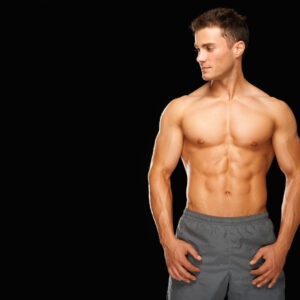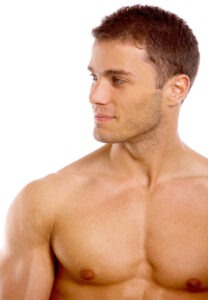 A SLAP tear is an injury to a part of the shoulder known as the labrum. The shoulder joint comprises a ball and socket joint which is similar to the hip joint. But unlike the hip joint, the shoulder joint socket is very shallow making it inherently unstable.
A SLAP tear is an injury to a part of the shoulder known as the labrum. The shoulder joint comprises a ball and socket joint which is similar to the hip joint. But unlike the hip joint, the shoulder joint socket is very shallow making it inherently unstable.
Defining this Issue
This makes the shoulder susceptible to dislocation. This injury occurs when the ball moves out of the socket. The shoulder joint has a circular cartilage rim (labrum) which forms a cup for the humerus (end of the arm bone) to move within in order to make up for the shallowness of the socket. The labrum of the shoulder effectively offers depth to the shoulder socket.
A particular type of labrum injury or labral tear is known as a SLAP tear. The term SLAP is an acronym for Superior Labrum from Anterior to Posterior. This tear develops at the juncture where the tendon of the biceps muscle inserts on the labrum.
The accomplished Thomas and Bigler Knee and Shoulder Institute, led by committed board certified orthopedic surgeons Dr. Steven C. Thomas and Dr. Gregory T. Bigler, provides orthopedic treatments to patients in Las Vegas, Nevada, and other neighborhoods and suburbs in this area of America.
SLAP Tear Symptoms
The common symptoms of a SLAP tear include pain and a catching sensation when there is movement in the shoulder, usually due to overhead motions such as throwing. Patients typically report deep pain within the shoulder or in the back of the shoulder joint.
In general, it is hard to identify the cause of these symptoms unless the biceps tendon is also affected. If the patient has a SLAP tear along with biceps tendonitis, they may report pain over the front part of the shoulder, where the biceps tendon is located.
SLAP Tear Diagnosis
An expert examiner will perform several tests to diagnose SLAP tears as a part of a shoulder physical examination. In addition, they may question the patient in detail to identify symptoms pointing to a SLAP tear.
A SLAP tear diagnosis can be challenging as these injuries are may not be apparent on MRI scans. They usually show up well on MRI scans when it is performed with an injection of contrast. The patient is injected with a fluid, known as gadolinium, in the shoulder to conduct a contrast MRI. This fluid highlights tears of normal structures including SLAP tears.
Upon injecting gadolinium contrast into the shoulder before the MRI scan, the sensitivity of an MRI (the percent of times the test will highlight the tear) increases remarkably. An imaging test will not display every SLAP tear. At times, a SLAP tear diagnosis is made during the surgery.
SLAP Tear Treatment
SLAP tear treatment often commences with basic steps to reduce the pain and regain shoulder strength. The patient will usually be advised to undergo nonsurgical treatments for at least three months as many patients are able to resume full athletic activities in this duration without any surgical intervention.
For patients who are unresponsive to these measures, a surgical treatment called SLAP repair is commonly recommended. Sometimes when the SLAP tear leads to nerve injury and weakness in the shoulder, the patient may have a more immediate need to go into surgery.
Board certified orthopedic surgeons Dr. Thomas and Dr. Bigler receive patients from Las Vegas, Nevada and nearby areas across the landscape for orthopedic treatments.If you would like to schedule an appointment or learn more about the Knee and Shoulder Institute procedures & treatments performed by Las Vegas, Nevada board-certified surgeons Steven C. Thomas, MD and Gregory T. Bigler, MD. Contact the office today click here.

 A majority of SLAP (Superior Labrum Anterior and Posterior) tear patients will respond favorably to conservative non-surgical treatments.
A majority of SLAP (Superior Labrum Anterior and Posterior) tear patients will respond favorably to conservative non-surgical treatments.  Many common
Many common  Radial tunnel syndrome is also known as a radial nerve entrapment. This condition refers to radial nerve compression or restriction in the tunnel that it passes through.
Radial tunnel syndrome is also known as a radial nerve entrapment. This condition refers to radial nerve compression or restriction in the tunnel that it passes through.  Tennis
Tennis  Injuries of the arm and
Injuries of the arm and  Tennis
Tennis  sideways. The subacromial bursa refers to a fluid sack over the tendon which enables motion.
sideways. The subacromial bursa refers to a fluid sack over the tendon which enables motion.  or arm bone is located. Glenoid labrum tear causes pain in the shoulder as well as weakness in the joint of this tissue tears.
or arm bone is located. Glenoid labrum tear causes pain in the shoulder as well as weakness in the joint of this tissue tears.  sideways. The subacromial bursa refers to a fluid sack over the tendon which enables motion.
sideways. The subacromial bursa refers to a fluid sack over the tendon which enables motion.